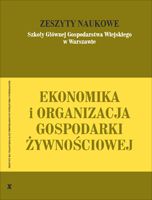Main Article Content
Article Details
ARMAND D.L., 1981: Nauka o krajobrazie. Podstawy teorii i metody logiczno-matematyczne, PWN, Warszawa,
BRZUCHOWSKA J., 1994: Modelowanie konfliktów między aktywnościami na potrzeby planowania przestrzennego. [w:] Planowanie przestrzenne. Zarys metod i technik badawczych. Politechnika Wrocławska, Wrocław, s. 33-35.
BUCHWALD K. ENGELHARDT W., 1975: Kształtowanie krajobrazu i ochrona przyrody. PWRiL, Warszawa.
CHRISTALLER W., 1963: Ośrodki centralne w południowych Niemczech. Przegląd Zagranicznej Literatury Geograficznej, z. 1.
DOMAŃSKI R., 1993: Gospodarka przestrzenna. PWN, Warszawa.
DZIEWOŃSKI I. i in. 1974: Potencjał ludności Polski w latach 1950-1970. Przegl. Geogr. T.36,z. 2, 183-204.
HORODEŃSKI R., 1995: Polityka ekonomiczna i społeczna państwa jako przesłanka polityki regionalnej. [w:] Polityka gospodarcza i społeczna państwa a polityka regionalna. Wyd. Fund. "Rozwój SGGW", Warszawa.
ISARD W.A. i in., 1965: Metody analizy regionalnej. PWN, Warszawa.
KŁODZIŃSKI M., 1997: Rozwój terenów wiejskich w Anglii. Wieś i Rolnictwo, 4, 42-60.
KOSIŃSKI L., 1965: Potencjał ludności jako miara jej rozmieszczenia. Przegl. Geogr. T. 37, z. 2, 355-368.
KUŚMIERZ-GOZDALIK U., 2000: Organizacyjno-produkcyjne i ekonomiczne aspekty zmian rolniczej przestrzeni produkcyjnej w drobnych gospodarstwach indywidualnych. AR Lublin.
LOSCH A., 1961: Gospodarka przestrzenna. PWE, Warszawa.
PALANDER T. 1935: Beitrage zur Standortstheorie. Uppsala, Almqvist and Wiksells Bokttycki-A-B.
PIETRASZEWSKI W., 1982: Diagnoza stanu gospodarki przestrzennej Polski - wybrane problemy. Biuletyn KPZK PAN, Warszawa, z. 120, 141-226.
PREDOHL A. 1925: Das Standortsproblem in der Wirtschaftstheorie. Weltwirtschsftliches Archiv, t. 21.
REGULSKI J., 1974: Cybernetyka systemów planowania. Warszawa 1974, s. 23-24.
STOUFFER S.A., 1940: Intervening opportunities: a theory relating mobility and distance American Journal Sociology Review, t. 5, s. 845-857. (Crossref)
THUNEN J.H., 1921: Der isolierte Staat in Beziehung auf Landwirtschaft und Nationalökonomie. Jena, G. Fischer. Pierwsze wyd. w 1826 r.
WEBER A., 1909: über den Standort der Industrien. Cz. I. Reine Theorie des Standortes. Tybinga J.C.B. Mohr.
Downloads
- Urszula Kuśmierz-Gozdalik, Trwałość społeczno-ekonomiczna a zmiany w ukształtowaniu przestrzeni produkcyjnej gospodarstw rolnych , Zeszyty Naukowe SGGW - Ekonomika i Organizacja Gospodarki Żywnościowej: Nr 41 (2000)
- Urszula Kuśmierz-Gozdalik, Poziom i poprawność systemów nawożenia w gospodarstwach o zróżnicowanym ukształtowaniu przestrzeni produkcyjnej w kontekście zagrożeń środowiskowych , Zeszyty Naukowe SGGW - Ekonomika i Organizacja Gospodarki Żywnościowej: Nr 37 (1999)





